Authority Site Overhaul Case Study #4: How to Validate a Product
Note: This is a post by Alex, an email marketing/funnel design specialist who we brought it to work on LearnU. Alex blogs over at ThinkFunnel.com. If you’re not up to date on the Authority Site Investment Case Study, here are the previous updates:
The First Post of the Case Study (Due Diligence and Validation)
The Second Post of the Case Study (Monetization Strategies)
The Third Post of the Case Study (Creating a Content Creation Framework)
The Fourth Post of the Case Study (How to Validate a Product)
The Fifth Post of the Case Study (Site Structure, Internal Linking and Ad Positioning)
The Sixth Post of the Case Study (Contributor Accounts)
The Seventh Post of the Case Study (Social Media Optimization)
The Eighth Post of the Case Study (Why Content Marketing is Tough)
(Password for all posts is NoHatDigital)
Are you wondering how people come up with ideas for info products? In the vast majority of cases, there’s no ‘Eureka’ moment – the people who are consistently successful with product creation succeed because they have replicable processes – not because they have amazing ideas or some hidden insight into the human psyche.
When it comes to product validation and creation, process is everything – by focusing on testing, you minimize your costs at each stage of the process and you can guarantee that you don’t throw time and money down the drain by creating a product that nobody wants to pay for.
I’m Alex (from ThinkFunnel.com). Hayden and George asked me to work on their funnel and to show you what I’ve done, step by step. This includes demonstrating how to validate a product, how to build a sales funnel, and ultimately, how to maximize profits.
If you’re looking to grow revenue by building sales systems (aka funnels) on your site, this post should be right up you alley. Funnel optimization is my specialty, and in this post I’m going to go through the initial product validation phase in an easy to follow, step by step manner.
What you’ll learn here is how to validate your offer. To truly understand what we are up to let me show you a run down of the plan.
Understanding Your Website Earnings
If you have a website that is earning with Adsense, CPA or CPC there is a chance you’re leaving money on the table.
There are two ways to grow revenue in this model.
- Grow traffic. Which works, but takes time.
- Raise your Visitor Value. ( monthly earnings / unique visitors per month = visitor value )
Typically, if your site already gets a reasonable amount of traffic, the real way to improve your site earnings substantially is to increase visitor value.
Example of an Adsense Site’s basic funnel:
Let’s say you have an adsense site in the “Back Surgery” Niche. Your site gets around 10,000 visits a month. Average CPC is about $2, with a 3% CTR.
Side Note: If the screenshot above shows $10, why are we getting $2 CPCs on Adsense?
The above amount is what advertisers will pay for search, not for the content/display network. Because of this I usually will put a ceiling on clicks around ($2-3).
10,000 x 3% x $2 = $600/mo with a 6 cent visitor value (10000/$600)
This looks pretty standard right?
Here’s what an optimized funnel would look like
Instead of having Adsense ads, you partner with someone who offers an existing product or service. A quick Google search shows the following ads:
We see there are some options that promote specialist surgeries. And we know these guys are paying a lot for each click. If you were to promote them directly, you’d have creative control over the ad placements and copy (rather than relying on standard Adsense blocks). This would probably allow you to greatly increase your click through rate on an ad. Getting a 15%-30% CTR is not unreasonable at all.
But you can take it a step further. You can negotiate with advertising partnerS to pay you for leads instead of paying you for clicks. If they’re paying $10 CPCs on Adwords, they are likely actively monitoring their advertising costs and conversion rates and will certainly know how much they are paying per lead/conversion. Let’s assume they are currently getting leads for $50 – you can offer them the same leads for $30.
Again, you can do whatever you want on your site to pull in leads. After some testing you could likely be converting 10% of your users to get more information on a certain type of surgery at a certain clinic(for example, by using a multi-step form that qualifies the lead). This is what your funnel would look like:
10000 visitors * 10% conversion rate * $30 lead values = $30,000/mo with a $3 visitor value (10000/30000).
Wait… what?!? How did we go from $600 a month to $30,000? You didn’t read that wrong, and this is not a totally insane example. I’ve seen these kinds of increases in the past…And this is by promoting someone else’s product and not creating your own (though it’s unlikely you’re a spinal surgeon with your own nation-wide chain of clinics). But if you were… you’d likely be making 3 times this amount.
Obviously the above was just an example, but hopefully it’s got you scheming about what to do with your own under-monetized sites.
Product Ideas for LearnU
One of the main themes on LearnU is how to study better. The problem with this niche is there aren’t any other products on how to study better that go for more than $10 bucks anywhere on the internet (that we could find). Still, it’s a good fit, so we decided we’d use this as a control group and split-test against a new idea.
Since LearnU already has a bunch of information about careers for college students, we figured it wasn’t a huge leap to see if the audience is also interested in entrepreneurship. This was also a strategic move on our part because there are a few products we already have access to that we could offer to our audience – and it’s always good to start with an unfair advantage.
By splitting our testing into two groups, we can test both ideas and see one gets us a better opt-in rate. The offer that ends up converting better (to emails) with our audience will likely be in a niche that the audience is more interested in. We’d then develop a product based in the specific niche that the audience showed a better response to.
How to Validate your Offer Without Feeling Lost
The first step is to look at your traffic and figure out what offer will work with it. We call this process “validation”.
Your product validation has nothing to do with getting lucky. It has more to do with research and testing.
Here’s how we validated our offer:
Research Research Research!
Go to your Google analytics account and take a look at your most popular pages by search traffic
Open Google analytics
- Click on “Behavior > Site Content > All Pages”
- Click “Secondary Dimension” and choose “Acquisition > Traffic Type”
- Arrange pages by “page views”
- Write these pages down and write down the topics of each page in descending order
Here’s what we have for the last 30 days (note, some of this is new content):
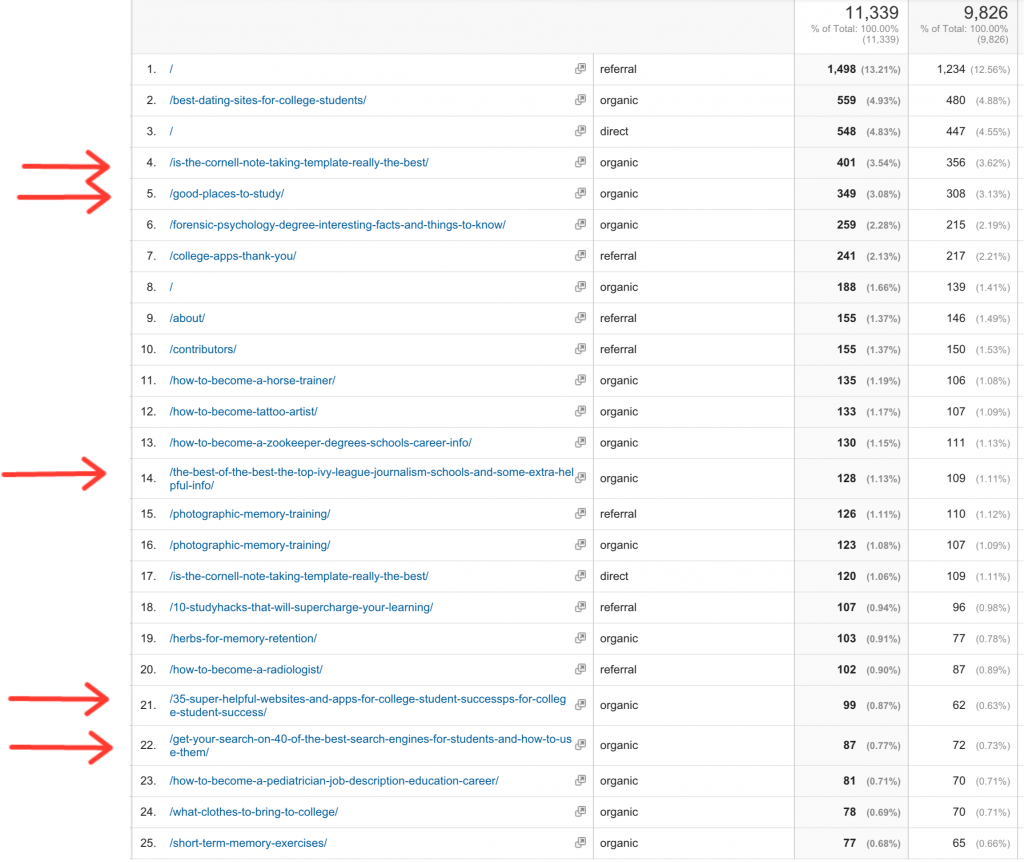
If you add all that up, it only comes out to about 1000 unique visitors (there are some more that are career related but they are even less relevant). We will be adding an opt-in on our site, but site opt-ins will not be higher than about 2%, and if we want to split-test 2 different ideas then we’d only get about 10 leads in a month. Not exactly instant feedback.
That’s why we decided to to head over to Facebook for some more information gathering. Since we don’t have a large enough audience yet to test thoroughly and quickly, we’ll use FB ads instead.
Facebook Audience Insights
This is an amazing research tool for understanding your visitors.
If the FB page for your site has enough likes, or if you’ve installed an FB Custom Audience pixel on your site, you can use Audience Insights to get an in-depth look at your audience. (You need 1000+ likes or 1000+ visitors through the Audience Pixel to use this feature).
When looking through your Audience Insights, take note of:
- The Location of your audience
- Average age of your visitor
- Male or Female
- Interests
Another thing you can do in FB Audience Insights is to scope out the audience of your competitor’s FB pages (provided they have enough likes). If you target the right competitors, then the makeup of your audience should be reasonably similar to your competitor’s pages.
If you have Demographics data activated in Google Analytics, you can also use this as a benchmark for what your audience looks like (the data from FB is more detailed though).
Understanding Your Audience
In order to peek into the mind of our audience I did what’s described above.
We found out that our main demographic was:
- Age: 19-25
- Gender: Split Male 46% and Female 54%
- Education: In College
- Interests: Studying
- Top Categories: Honorsocietey.org
Other Interests From the Website:
Top pages:
- Career Information
- Studying
- Getting Ready For College
Testing a Product Idea
You now want to make an offer to your customer base and see if they would be interested. To do this, you need to create a landing page (we had Thrive Leads installed so just used that) and mention a lead magnet (something free that subscribers will get). This is a way for you to give something of value in exchange for someone’s email address.
I actually made two.
One is focused on entrepreneurship:
The second is focused on study hacking:
Just know that we still haven’t created any of the materials that will be sent in exchange for an email address. We are just testing the waters for our offer.
Facebook: The Ultimate Testing Platform
Note: If you already have a niche site with a lot of traffic, you can just test your offers there. As you saw above, LearnU doesn’t get enough traffic to validate this idea quickly, so we turned to Facebook.
Follow the simple steps here, so you can move past feeling overwhelmed. You’ll be able to quickly make Facebook testing a skill you can harness.
- Go to Facebook.
- Click on the triangle in the upper right corner of Facebook.
- In the drop down menu click “Create Ads”
When selecting your audience use the following:
- Optimize for clicks to site.
- Next enter the landing page you created to have people land on.
Demographic Targeting
You already did the research now it’s time to type in the information, you uncovered.
Fill out the following demographic data.
- Locations
- Age
- Gender (if it’s a broad topic leave this untouched)
- Interests (This is where you type all the information you found)
Hint: Make sure your reach is between 500,000 and 1M. This is a good amount of prospects to start your testing.
Budget: Then select a lifetime budget of $10 a day for three days. This gives you enough time for the ad to get the data you want.
Now, Choose a few different photo’s. Try related photo’s as well as non- related ones. You can add up to six different images. This is the place to get creative.
These are the ads we used. Same words but different photo’s will help you find out which ad does the best.
Headline: Write the main thing someone will get if they click to your site.
Text: Write a benefit with a CTA to the site.
New Feed Link Description: Re-iterate what the visitor will get by clicking.
Now Place your order.
You just placed an ad, and it was really easy. If you want to get the most bang for your buck, wait for the report. Optimize your ad and rerun.
Facebook Ad Metrics… Get Better, Faster
The brilliant thing about Facebook, is that when you run an ad. It gives you tips on how to make your ad better.
Well not directly…
Here’s what I mean.
Once you run your ad you will get an ad report. In the report, you’ll learn which demographic gave you the most clicks. The report sorts everything by:
- Gender
- Ad Placement (news feed, sidebar, mobile, ad partners)
- Demographic Data
- Etc… There’s a lot of goodies to look through
Once we ran our first ad sets, our report looked like this.
This made it easier to know that next time we ran ads we should target men. That way our ad spend was optimized.
You can do this within the placement category too. If your ad doesn’t do well in the various placements;
- News Feed
- Side Bar
- Mobile
- Audience Network
In our first ads you can see we didn’t have any conversions in Audience Network. Since there is no conversion you can tell that this is not a good place to spend money.
Now that you get how to test, let me show you my results.
The Results of Our Testing
In our setup we ran two different ads. One to an entrepreneurial download, and the other to a study hacking course.
And here are the two best performing ads for each opt in page.
The winner in the first round was the entrepreneurial College Crash Course.
This is great information to have (and actually went against our first instinct). By running these tests, we gained a better understanding of the kinds of products that our audience is interested in. The next thing we wanted to do was build more tests for the entrepreneurial course.
After the initial test to determine what kind of product might work, we moved on to a three-way split test to see what kind of lead magnet would convert best.
We offered a mini-course, a case study, and a quiz.
We ran all three lead magnets with the exact same Facebook ad copy This allowed us to find out which lead page would get the best conversion rates.
The Metrics to Focus On
When judging a campaign, don’t judge a book by its cover. You should be looking at the numbers – specifically, you should be looking at two metrics:
CTR (Click Through Rate) This is the amount of people who clicked on an ad, versus the amount of people who saw the ad.
Next is CPL (Cost Per Lead) – Depending on where you get your traffic, this will help you optimize in the future if you decide to get all of your leads from paid traffic sources.
Which Landing Page Won….?
Here are the three pages:
The CTR was pretty similar across the board. But the opt-in rate was dramatically different.
- Quiz – We had a lot of people click through but nobody put in their email.
- Case Study – We had a 25% Conversion with the lowest CPL
- Mini Course – 12% opt-in rate with a much higher CPL
Now we know which offer to move on. This is awesome. We will ramp up the activity and really optimize the offer. This will involve collecting leads on site, as well as the third party site that we mentioned in a previous post. The next update on the product validation/creation side will show-case the actual offer creation, autoresponder and tripwire email we’ll be using to see if our leads can become paying customers! Since we need to collect data over time, the next major update on product validation won’t be for a month or so.
Wheeew! There you have it! Pat yourself on the back you deserve it that was a pretty big update 🙂
Alex
Alex writes about product validation and funnel optimization at Think Funnel

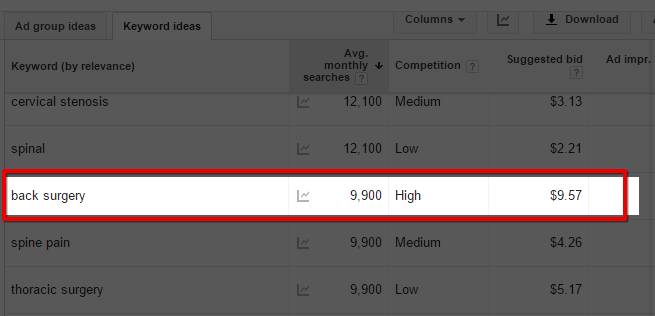
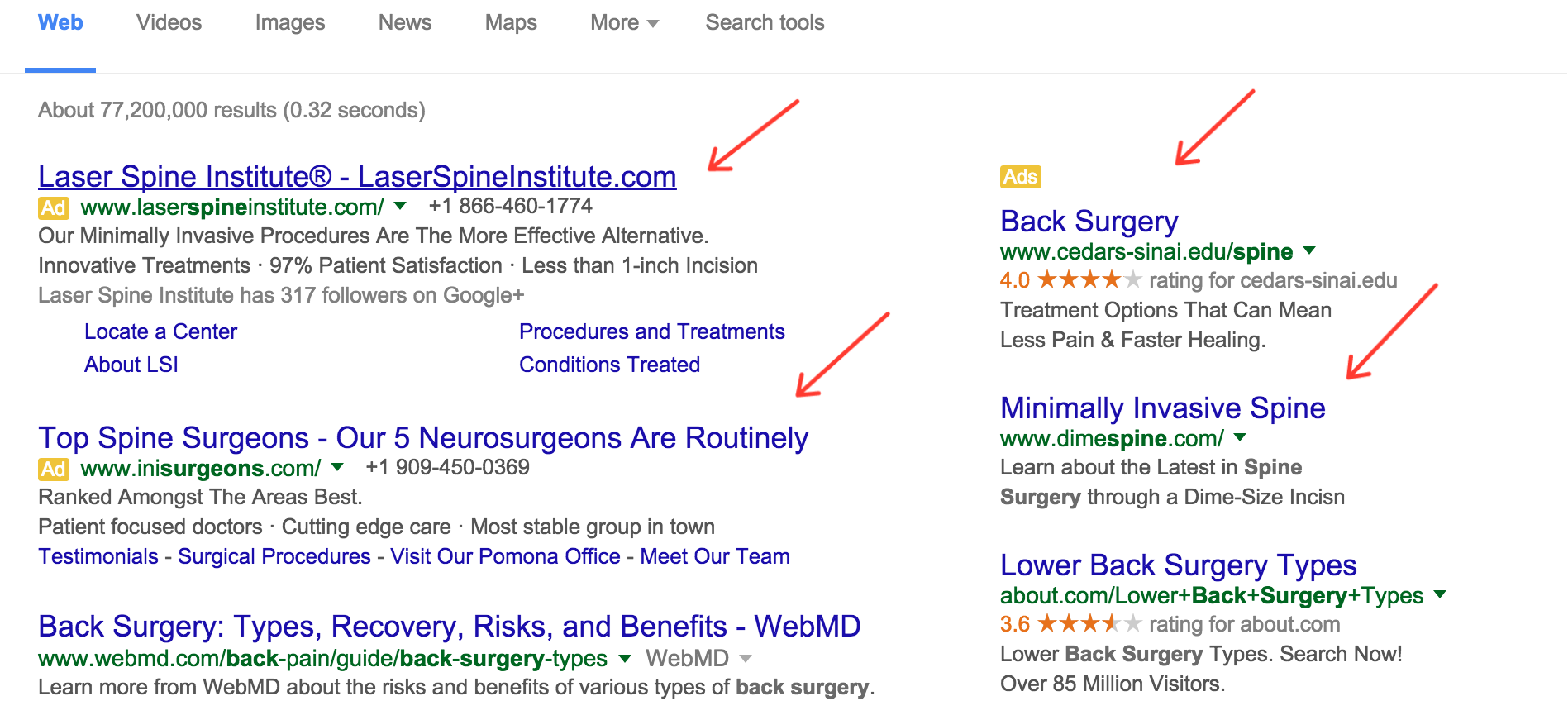
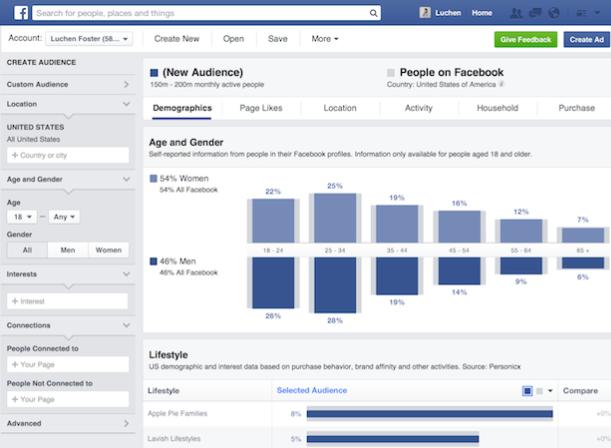
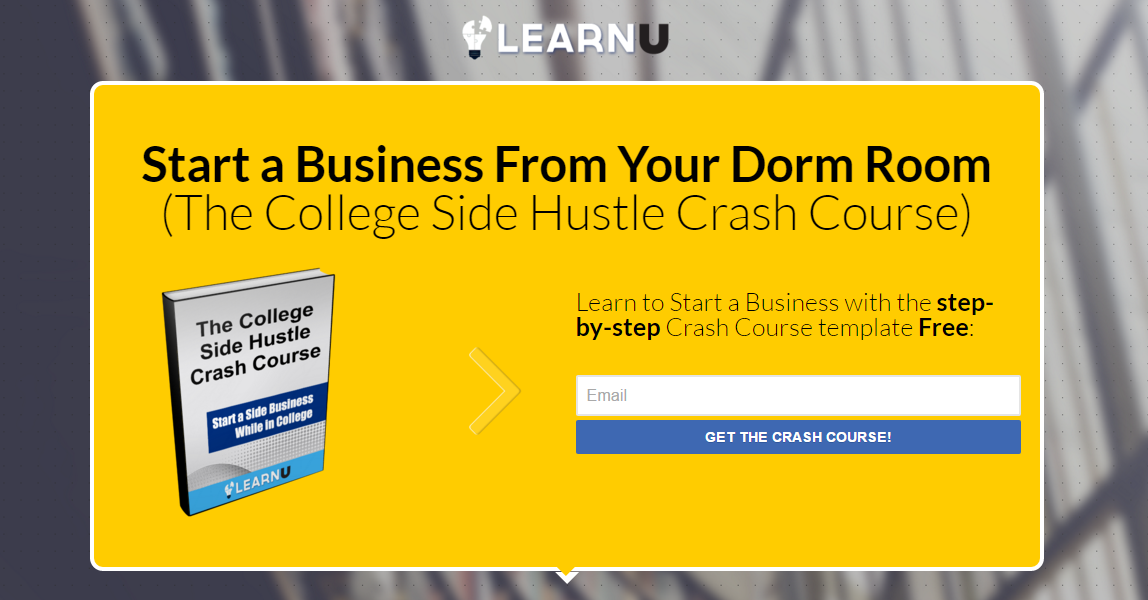

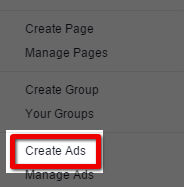
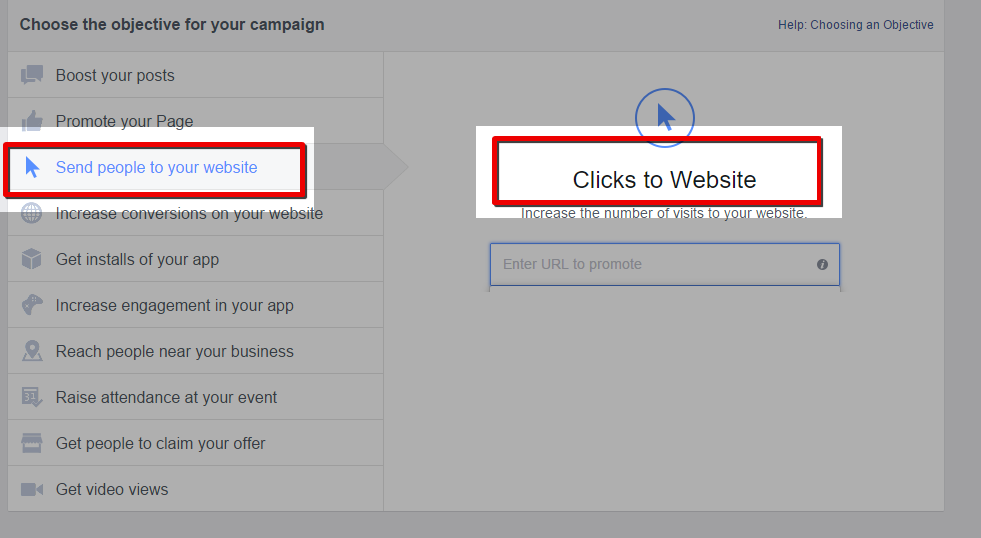
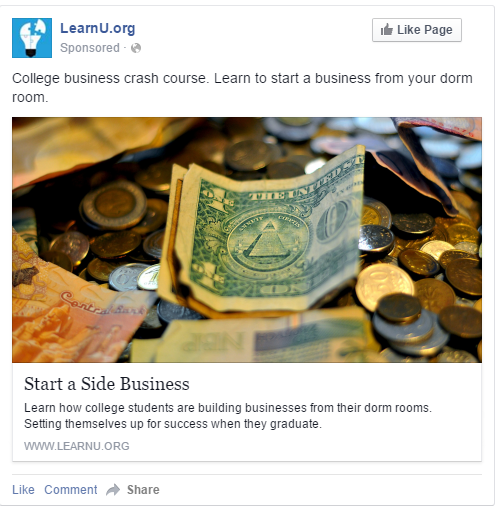


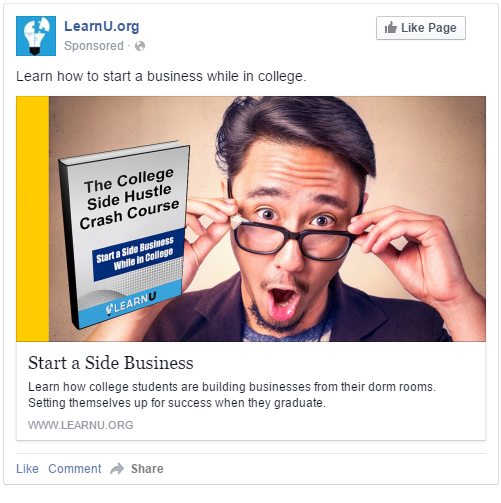
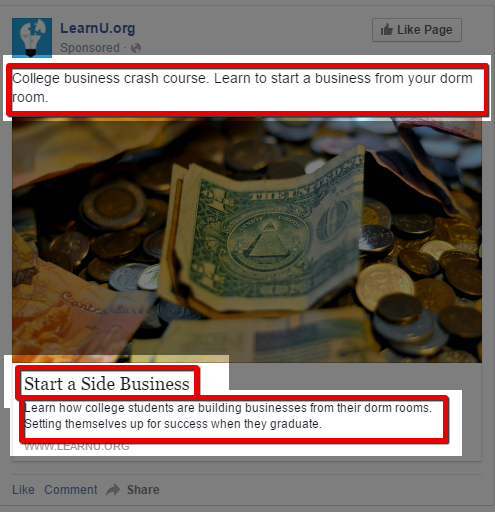

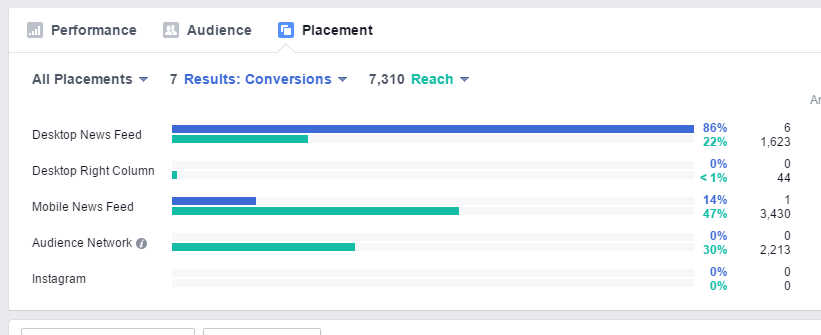
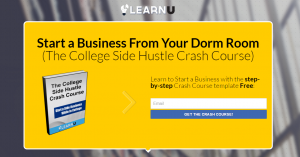

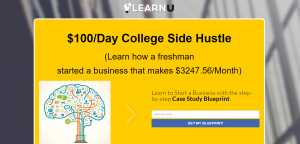
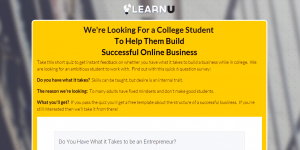
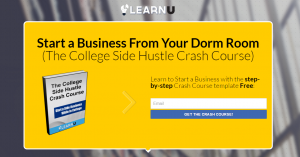

Very interesting article this week. I’m not sure how to handle it. I have a site that gets 3k visitors per month and earns $16. I feel like I’m doing something terribly wrong because even with the initial adsense example, the site with 3x my volume was earning 40x my revenue.
Do you have any tips on how you were able to get to the $600 from the 10k visitors.
Thanks in advance,
Leo
Hi Leo,
Great question. First the site we used is an example. That being said look at the niche that you are getting traffic for(i.e. keyword selection your ranking for)
When you do your initial keyword research, and you’re looking at Google adsense do you look for high profit cpc values? I’d say that is the first step.
Next would be to reread the article and understand on how you can capture and sell leads cutting out Google Adsense.
Thanks
Hi
Thanks for this very detailed post, much appreciated.
It clearly shows the amount of work involved and a great strategy for testing.
Regards
Steve Wyman
Steve,
Thanks for the feedback!
It’s true it can be some work, but sets yourself up for success. We’re trying to show how to make real money vs. get rich quick mumbo jumbo 🙂
Hello Alex,
That was indeed a pretty big update and I really enjoyed every bit of it, have learnt so many awesome stuffs here now.
The problem with most people that are building authority sites is that they usually do things based on what they think will work and at the end of the day, they’ll find out that they’ve wasted money and time. But if one can cool down and carry out this kind of research before concluding on which way to monetize his site then, success will certainly be inevitable.
what I will love to know here is if you created a separate page for the offers or if you just used the pop up with thrive lead as in, when someone clicks on the offer on Facebook, are they taken to a particular landing page or it just shows a pop up?
Thanks for sharing.
Theodore-
I created separate squeeze pages for each offer. The format of each page was the same, but the content was different based on the offer.
Thanks
Hi Alex,
great post with lot of usefull information. I didn’t understand one thing, do you had something to offer to people that put their email? Did you had the free courses, quiz and case studdy to offer?
I didn’t understand that part. My initial thought was that there was no product to offer. Am I wrong?
Thanks in advance
Nuno
Nuno-
Good question, you are correct. No, I did not create the offer. The reason is because, you want to validate the offer before you create it. So you run the ads, to the landing pages, and collect emails.
Whichever works to be the best offer, i.e. has the best conversion rate, you create that offer. Then you rerun your ads while optimizing them to get a better cpc.
Very detailed update! This feels like a new learning experience altogether
Thanks Mark-
Glad to know you are getting some good insights 🙂
Great post,
Love the demographic hack via Facebook and the way you refined your ads through the report.
I started off in Adsense but quickly found moving to affiliate offers (and later CPA Leads) I could earn much more per user.
With that said some niches work much better with the lead model, although they also tend to be the ones that pay better via Adsense also!
Sam
Thanks Sam.
That is the idea here, you really want to raise our Visitor Value. You’re exactly right on how you approached your adsense. Then moved into higher profit clicks through CPA.
This is similar to Nuno’s question, but do you have any angry folks that opt in since you don’t give them the crash course lead magnet they signed up for?
Hi Martin,
I believe what Alex did was create a short version of the Opt In in each case – a short free course, case study, and quiz in each case. We just didn’t create a full on product (that’s worth paying for).
I’ll get Alex to answer you in more detail though.
So, then once you create the product the ads don’t need to change but the ad might take a person to a sales page, or you sell the product to the list of people who opt in for the lead magnet. Makes much more sense now. Thanks!
Hi Martin,
Actually I didn’t create any of the courses. This was just a test. What I did was send people an automated email that said,
“Thanks for signing up. And I will be sending them their info shortly.”
Then in a follow up email state:
“Hey, I just wanted to send you your offer for (course, quiz), but do to overwhelming demand it’s in the form of a Case Study. Same info, just a better representation for you.”
Then once I had a winner I created that offer. Then sent it too all the leads. Nobody got upset because they were not sent anything.
Again since I was just testing the idea. And assuming the market is big enough you really don’t have to be concerned with making people ‘angry.’
If you’d feel more comfortable you could certainly create each opt-in but I’d rather make one awesome opt-in knowing what people want.
Hope that helps!
[…] The Fourth Post of the Case Study (How to Validate a Product) […]